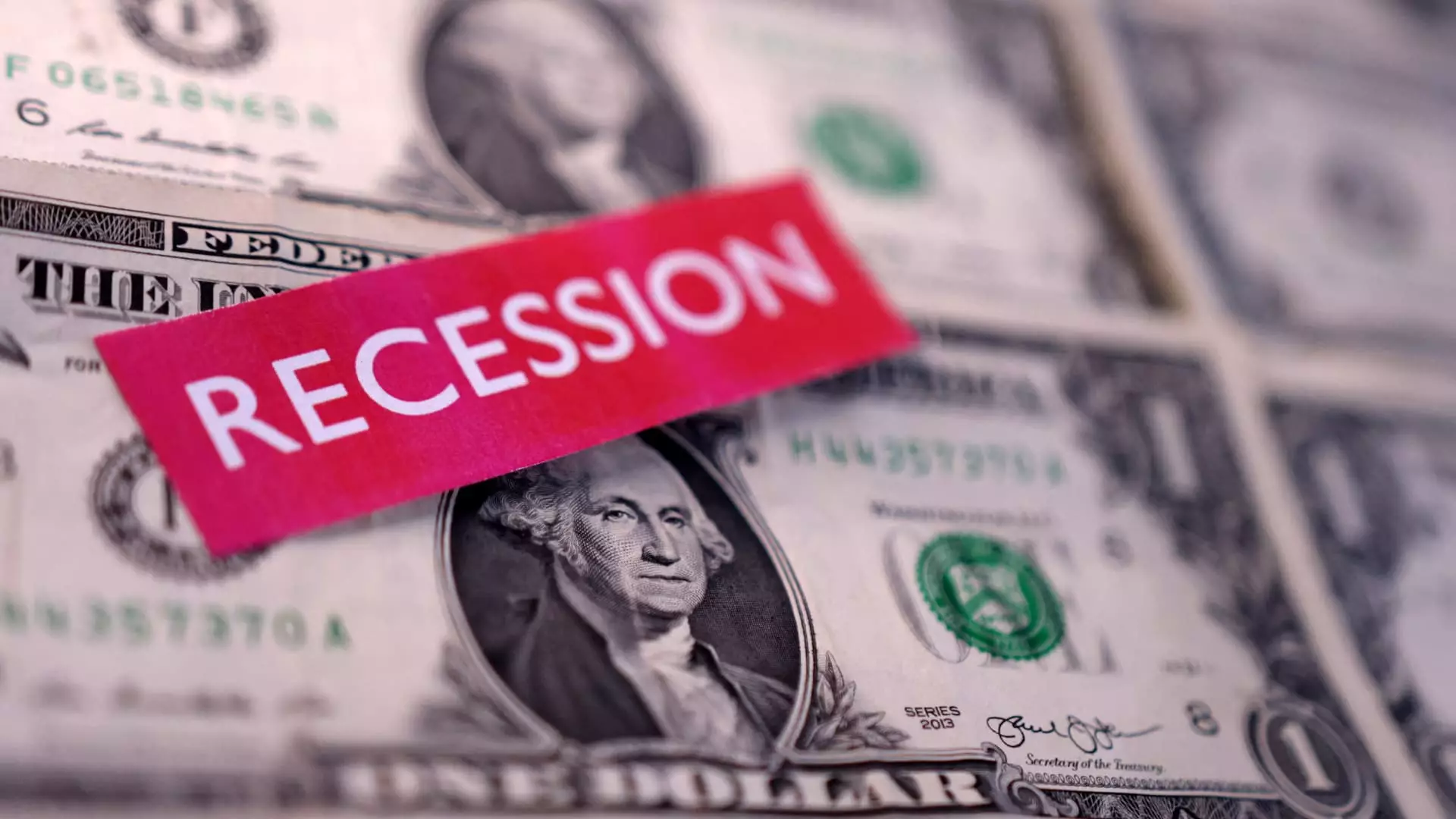Subscribe to any financial newsletter or read an economic forecast, and the atmosphere is thick with anxiety. The recent findings from Deutsche Bank suggest that the U.S. economy stands a near 50-50 chance of stumbling into a recession. With about 43% of 400 surveyed experts predicting an economic downturn within the next year, it’s alarming to consider these forecasts against a backdrop of low unemployment and otherwise stable growth indicators. The dissonance begs the question: how can we be facing a potential economic crisis while many traditional indicators still seem healthy?
Notably, Federal Reserve Chair Jerome Powell articulated a certain level of optimism, claiming that the economy remains “strong overall.” The juxtaposition of such optimism with the acknowledgment of burgeoning risks highlights a profound disconnect. When do we start dismissing this “strong” narrative as wishful thinking, and instead confront the realities that arise from an edge-of-the-wire economic climate?
Inflation and Growth: A Dangerous Dance
The situation is further complicated by the inflation forecast raised by the Fed to 2.8%, exceeding its target of 2%. We find ourselves in a precarious moment where growth is slowing while inflation remains stubbornly high. This scenario raises legitimate fears of stagflation—a plight not seen since the 1980s. While many economists believe we are not returning to those dark days, their reassurances feel more like abstract logic than a guarantee against what is emerging in the markets.
Interestingly enough, bond markets are flashing warnings as well. Jeffrey Gundlach of DoubleLine Capital’s prediction that recession odds could hover between 50% and 60% is worrisome enough. This correlation between evolving economic policies, such as tariff adjustments and their potential to induce a slowdown, creates a perplexing riddle for investors.
The Equity Market Response
The equity market’s shaky performance lately highlights an underlying unease. Morgan Stanley’s mention of an “uncertainty shock” is spot on; these feelings of instability emanate from fluctuating tariff policies and their cascading impacts on growth. Investors are right to be concerned; the intertwining specters of stagnant growth and persistent inflation could render the current policy landscape nearly unmanageable.
If the experts at Barclays are correct in predicting a growth rate that barely skims above the recession threshold at 0.7%, what is the real cost of this optimism that Powell maintains? The answer may lay hidden within the broad base of consumer confidence, which is now rattling at its foundations. Consumer behaviors can often shift faster than academic predictions can adapt, making this precarious balancing act increasingly difficult to maintain.
Political Ramifications and Policy Dilemmas
One cannot talk about the economic landscape without addressing the political frictions that underpin it. The anxiety surrounding President Trump’s tariff policies sparks resurgence in caution across the economic divide. Economists like Clement Bohr from UCLA Anderson openly discuss the risks associated with these policies and their impact on growth. His warnings serve as an insightful challenge to policymakers: the very economic strategies they propose could pivot from beneficial to harmful in a heartbeat.
As Americans grapple with national and global challenges simultaneously, they must remain vigilant about leadership that can respond to shifting economic tides. The risks are more than just academic or theoretical; they could lead to a significant and avoidable downturn. Protecting the economy from erratic movements demands more than rhetoric; it calls for informed, compassionate, and coherent policy decisions.
The Heart of the Economic Conundrum
Perhaps the most alarming aspect of our current landscape is that while central bank figures preach progress, the ground realities suggest accumulated fears point towards a brewing crisis. The sentiments expressed by experts range from cautious optimism to dire warnings, yet they have in common one critical awareness: we are at a crossroads. The decisions made in the coming months may set the trajectory for years—potentially locking in America’s path toward recession or even stagflation.
The crux lies in how we navigate these murky waters. Each economic strategy must be deftly reconsidered to understand their multifaceted impacts on both growth and inflation. If there’s one thing we must guard against, it is complacency—a silent killer within political and economic dialogues—and that’s the most chilling implication of all as we approach an uncertain future.

